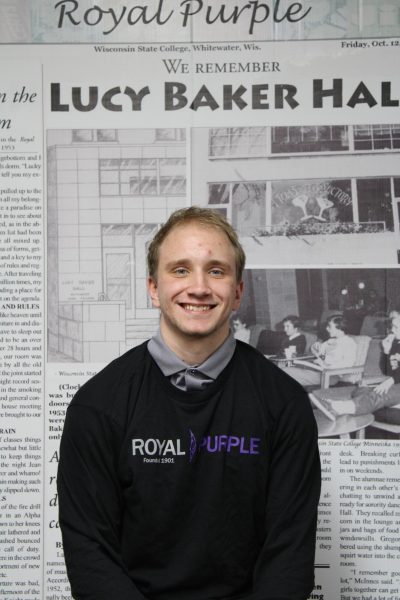The UW-Whitewater women’s wheelchair basketball team entered the 47th Annual National Intercollegiate Wheelchair Basketball Tournament (NIWBT) with high hopes. Despite finishing fifth out of six teams, the Warhawks left the court with a sense of accomplishment, ending their tournament run on a high note after a dominant victory in their final game.
As the fifth seed, Whitewater faced a tough first-round matchup against the fourth-seeded Arizona Wildcats. The Warhawks hoped to make a statement, aiming to get a shot at the top-seeded Alabama Crimson Tide. However, Arizona proved to be a formidable opponent, winning 63-29. The loss dashed their hopes of advancing to the semifinals, but didn’t dampen their spirit for the rest of the tournament.
“We played Arizona in the first round, and they’re a tough team for us. It’s a good matchup. They’re really well coached, so even though they don’t have any big-ticket players to tilt the game, they play really well as a unit,” said head coach Jake Shafer. “They came out hitting shots they normally don’t hit right away, which put us behind the eight ball. It’s hard to come back on a team that plays well together.”
Despite the setback, the Warhawks were determined to finish their season with pride. They regrouped for the fifth-place game against the City University of New York (CUNY), and this time, Whitewater was ready to play its brand of basketball. The Warhawks delivered a dominant performance, winning 64-24 to finish their season on a strong note.
“We ended on a really strong note,” Shafer said. “It was a fun game. A lot of people got some looks they didn’t always get during the season, and it was rewarding. We got to go out on a high note, and that’s not something you always get to do.”
For the players, this final victory symbolized more than just a win — it was the culmination of a season filled with growth and perseverance. Senior Lizzy Guerin reflected on the team’s journey, noting how much they had come together over the course of the season.
“We definitely grew from the beginning of the season,” Guerin said. “Even though we didn’t get the result we wanted against Arizona, we were able to prove that we were close to putting all the pieces together. We just didn’t do enough to get that Alabama game.”
Guerin’s final tournament run was particularly meaningful, marking the end of her collegiate career. Her leadership, alongside fellow senior Elizabeth Mattas, was instrumental in guiding the team throughout the season. Mattas, who had to overcome significant personal obstacles, including multiple surgeries, was grateful to have played in her final tournament.
“For me, this was emotional,” Mattas said. “I had to miss out on several of our tournaments the past two years to have brain surgery, so being able to finish the season and play in my last collegiate tournament is something that I am super grateful and proud of myself for.”
Despite the challenges, the Warhawks demonstrated significant growth over the course of the season. One of the highlights for Shafer was the development of younger players like Faith Aversano, who earned her first start in the final game of the season and scored her highest point total of the season. Shafer also praised the team’s cohesiveness and their ability to handle adversity, a key theme throughout the season.
“They banded together,” Shafer said. “It’s easy to get down as an individual whenever you have any kind of obstacle, but they did a good job at becoming a family and really handling issues together.”
As the 2024-2025 season came to a close, the Warhawks’ fifth-place finish at the NIWBT may not have been the result they hoped for, but the resilience, unity, and commitment they displayed will leave a lasting legacy for future generations of Warhawks.
Looking ahead, both the players and coaches are hopeful for the continued growth of the sport, particularly in the women’s division. As the program evolves, the Warhawks hope to inspire more athletes to get involved in collegiate wheelchair basketball.
“I hope to see the women’s division grow,” Guerin said. “Maybe in the next two or three years, you will find one division with seven or eight teams instead of six. There were five when I came in, so it was growing.”
Shafer echoed these sentiments, hoping that the sport will continue to expand and become more competitive.
“The more we can bring it all together, the better product you get to see,” Shafer said, “more competitive games across the board.”


